The Argentine property developer Alan Faena is describing why the Faena District—his new branded neighbourhood in Miami Beach—is, for him, utopia. “I feel it’s the perfect site between the north and the south. It’s fertile ground for a new cultural movement, a place where ideas intersect with the community. Miami is one of the most important cities in the US—it is a great place to talk to the world.”
If Faena is right, then utopia may look a lot like a carnival. To inaugurate his new complex, the developer organised an elaborate parade that wound its way around the Faena District on Sunday 27 November. Local and international artists created dances, sculptural floats and mobile performances that involved thousands of participants. Although the processional only lasted four hours, it took two years to produce.
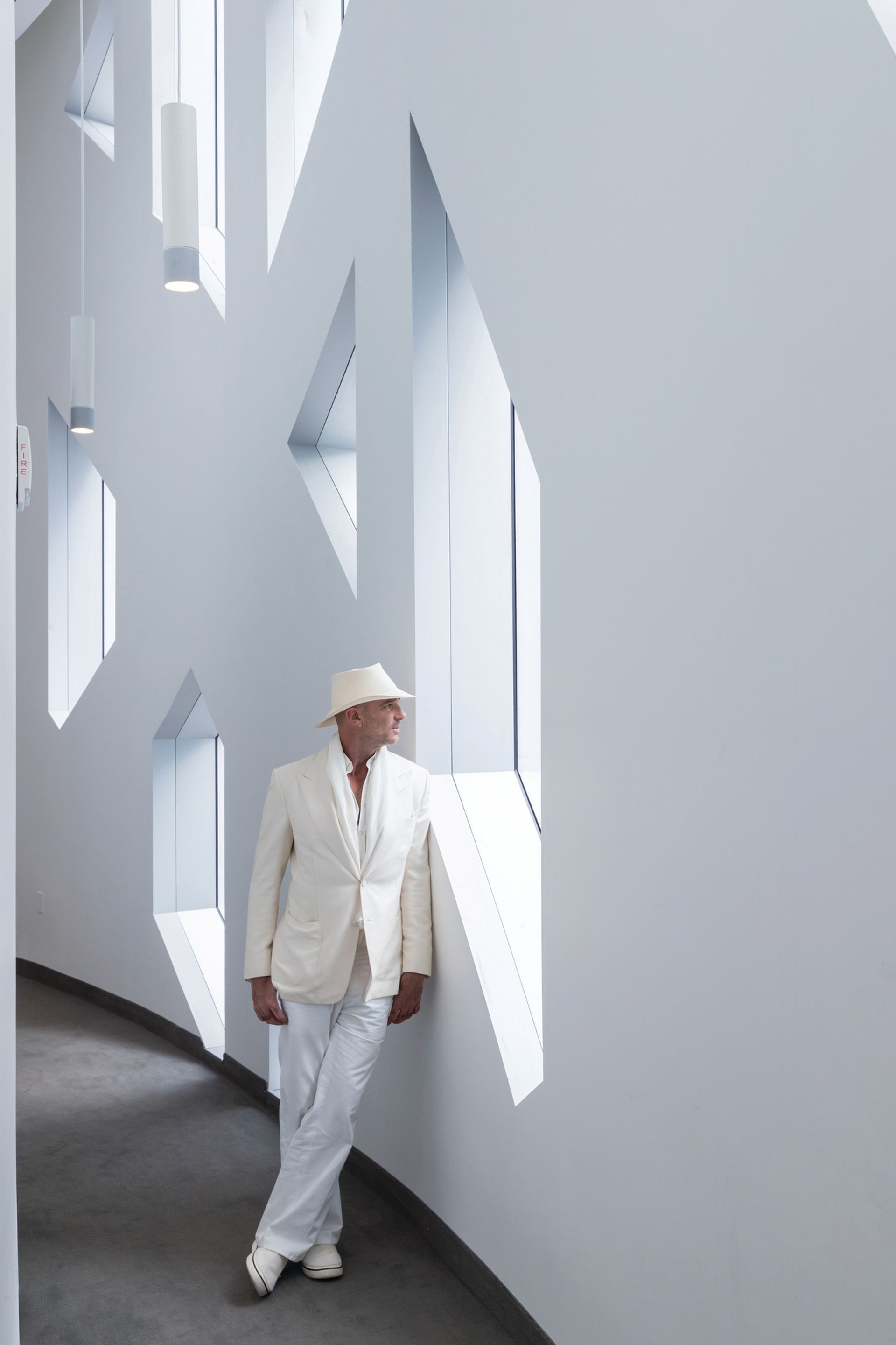
Faena, who made his fortune in fashion, has experience in creating gargantuan urban cultural complexes. He worked with the Ukraine-born chemicals mogul Len Blavatnik on a similar development in the Puerto Madero neighbourhood of Buenos Aires. Blavatnik is also backing the Miami Beach initiative.
Buffered by the Atlantic Ocean and Indian Creek, the new Faena District stretches north from 32nd to 36th Street. Faena Hotel Miami Beach, the first phase of the development, opened last year. Faena hired the Australian film director Baz Luhrmann and his wife, the costume designer Catherine Martin, to jazz up the 1947 building by taking it back to its Art Deco roots.
The district also includes a retail complex, scheduled to launch later this year, and Faena House, an 18-storey residential tower. (According to local press reports, the dealer Larry Gagosian bought a four-bedroom unit there earlier this year.) A two-tower condo on the site of the old Versailles Hotel, now known as Faena Mar, has been put on hold. (A spokeswoman for the company declined to comment further on the plans.)
The processional performance was, like many of Faena’s projects, hard to ignore. Called Tide by Side, it involved more than 30 South Floridian groups, from the Little Haiti Cultural Center to the Miami Gay Men’s Chorus, as well as major international artists. “Miami is known for its large Caribbean and Latin American populations. These communities are based on the traditions of public processions, street masquerades and carnivals,” says the project’s curator Claire Tancons.
The spectacle included a human snake conceived by the Brazilian artist Ernesto Neto (25 volunteers joined together by a single piece of crochet) and a travelling banquet of South Florida’s native dishes created by the Spanish artist Antoni Miralda.
Highlights of the parade Highlights of the parade The procession “has been a very organic process, like a living beast,” says Ximena Caminos, the artistic director of the business’s cultural programme, Faena Art, which commissioned the project. “It took on a form of its own, giving birth and activating the different platforms of the Faena district.” (The organisers declined to confirm the budget for the event, which is believed to be around $1m.)
Some remain sceptical. Last year, in an essay for the Miami Herald, the architecture critic Alastair Gordon wondered whether developments like the Faena District might turn Miami, which was recently ranked the most economically unequal city in the US, into a “Dubai on the Glades—another urban mirage for the super rich”.
That said, others have embraced the mega-project. The local artist Adler Guerrier says the parade is “grounded in a larger notion of Miami”, where private real estate development and art are often bedfellows. Celeste Fraser Delgado, the co-artistic director of the community group Carnival Arts, says: “This procession, set in the poshest of neighbourhoods, welcomes neighbours from across the causeway and across an economic gulf—if only for an afternoon.”
The procession also marked the opening of the Faena Forum—a 50,000 sq. ft cultural centre designed by the architect Shohei Shigematsu of the firm OMA—that is the district’s crown jewel. Caminos envisions the forum as a place to present inter-disciplinary live art that does not have a home in more traditional museums or performance centres. Next autumn, it will host Tree of Codes, a ballet originally commissioned for the Manchester International Festival with set designs by the artist Olafur Eliasson.
Caminos hopes commissions like this one, and others by local artists, will travel back and forth between Miami and Buenos Aires. “The programme aims to establish a cultural bridge between the North and South,” she says. “We haven’t just landed here like a flying saucer. We are integrating and involving local communities and artists on so many levels, and working to become an incubator of talent.”
Highlights of the parade
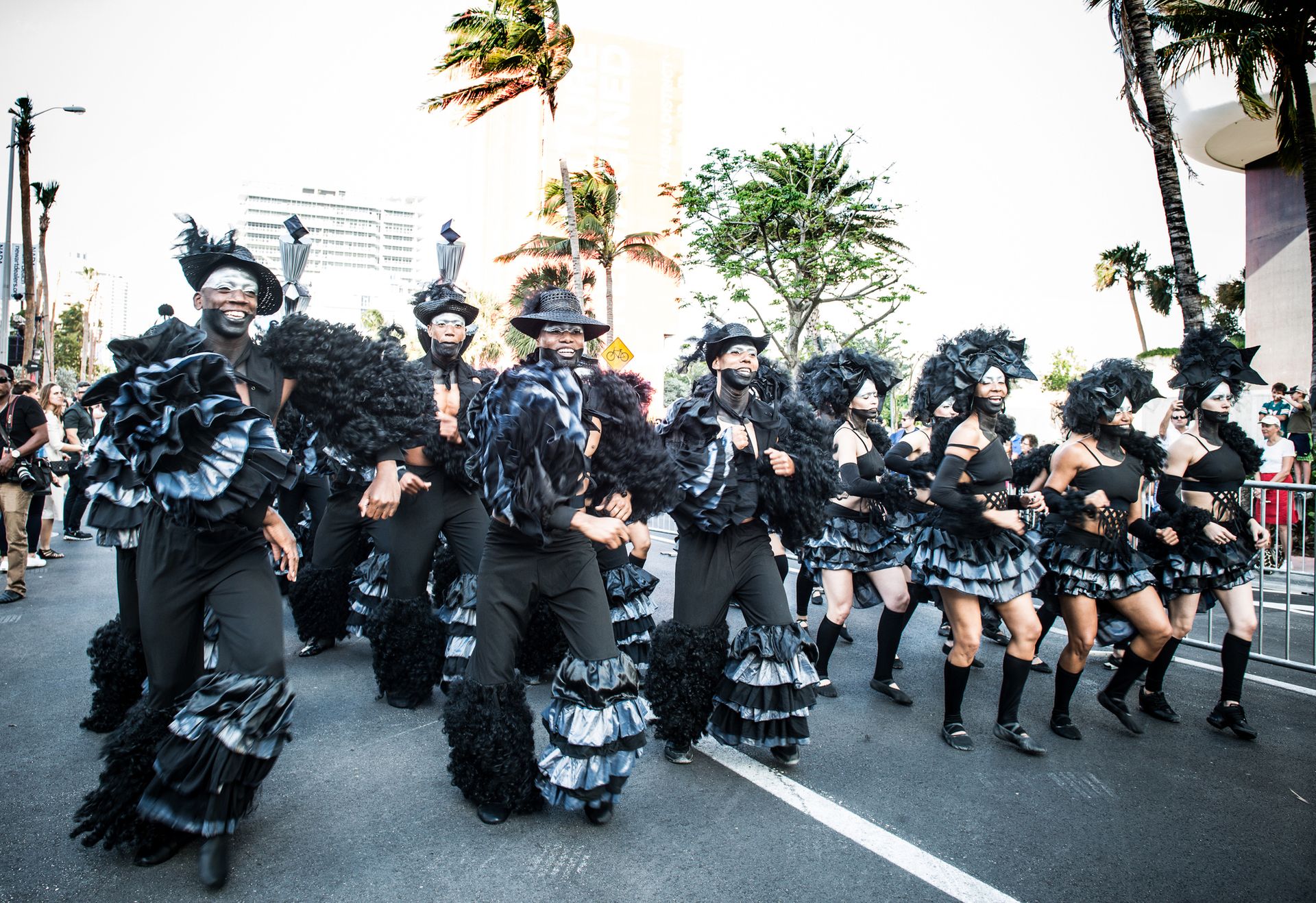
Los Carpinteros
The Cuban artist duo Los Carpinteros have put their own spin on the conga line—literally—by doing it in reverse. The artists wanted their performance to subvert the traditional carnival dance. Everything is the opposite of what is expected, including the performers’ costumes, which were uniformly black instead of brightly coloured, and the music, which was played backward. “In Cuba, from the pre-revolutionary era through to today, carnival is not only an occasion for celebration but is also a popular way to express political views and propaganda,” the artists say in a statement. “Conga Irreversible raises philosophical questions related to that history by reversing the musical score and choreography of a traditional Cuban carnival street procession.”
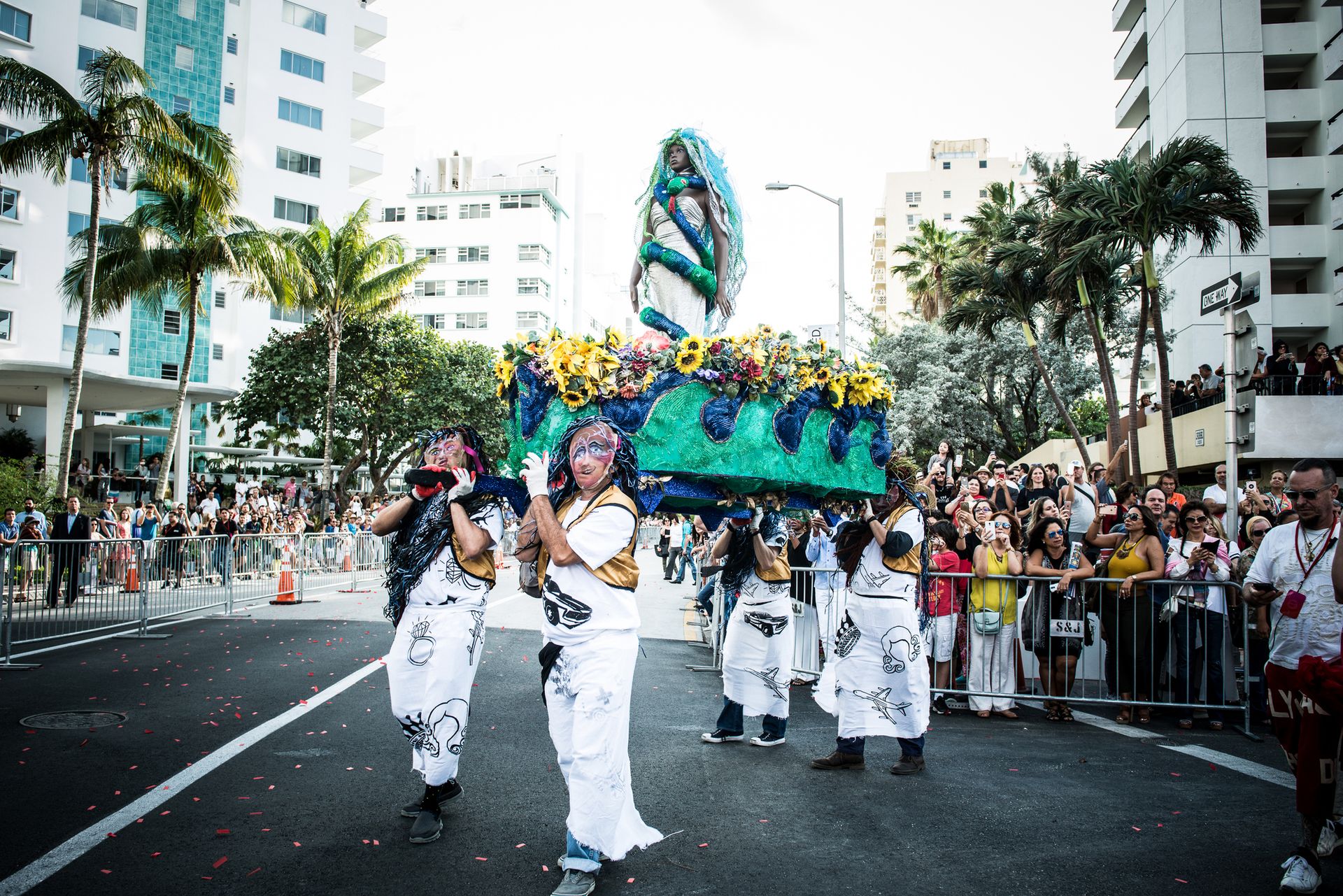
Celeste Fraser Delgado and Damián Rojo
Delgado and Rojo are the artistic directors of Carnival Arts, a community group in Miami that has produced numerous carnivals over the past decade. Siren Song, their contribution to Tide by Side, was the duo’s final performance. They invited young artists from the crisis shelter Miami Bridge, along with 350 other participants from schools and youth groups, to reflect on “cultural wealth and consumer wealth”, and the meaning of luxury today. A siren queen was carried on a boat at the head of the parade, followed by dancers and singers performing Bel Kongo (Beautiful Kongo). The project was “just a few miles from [the students’] homes, but a world away from their experience of life so far,” Delgado says. “To bring young people whose families have such limited resources into an environment built for billionaires at once gives them a glimpse of what can be achieved, and also reveals the great inequalities right here in our own community.”
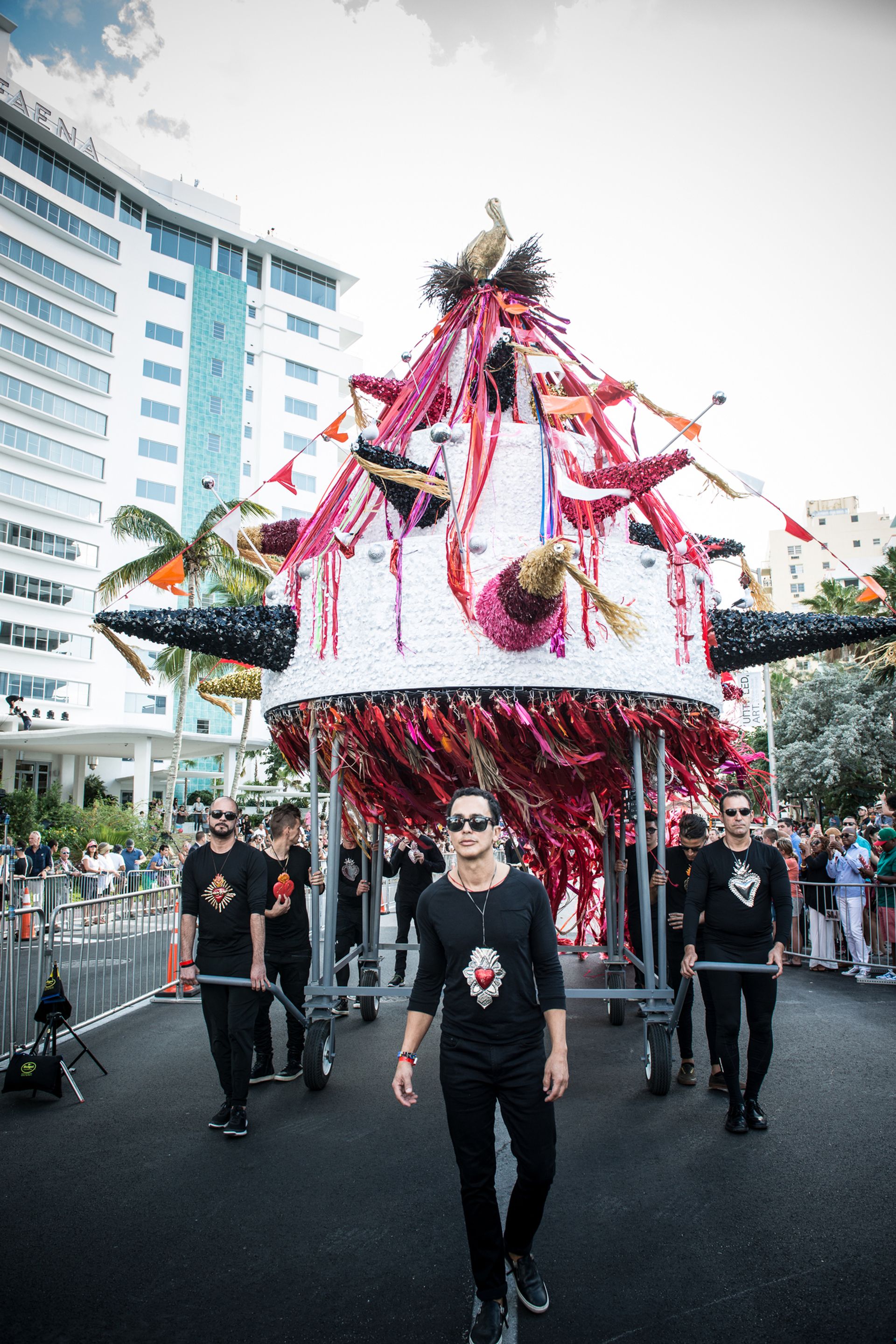
Carlos Betancourt
For the Miami-based artist Carlos Betancourt, Tide by Side was too good an opportunity to pass up. “The traditions of carnival, parade and procession are part of my heritage, so it is only natural,” he says. His contribution, Pelican Passage, revolves around a monumental sculpture inspired by carrozas (carnival floats), altars and piñatas. A small group of Betancourt’s friends and family acted as “worshippers” congregating around the Pelican float as it glided down the street. “The theme focuses on ancient ritual cleansing practices associated with the symbol of the pelican,” Betancourt says. In Christian symbolism, the pelican pierced its own breast with its beak, feeding her young with the blood to avoid starvation.
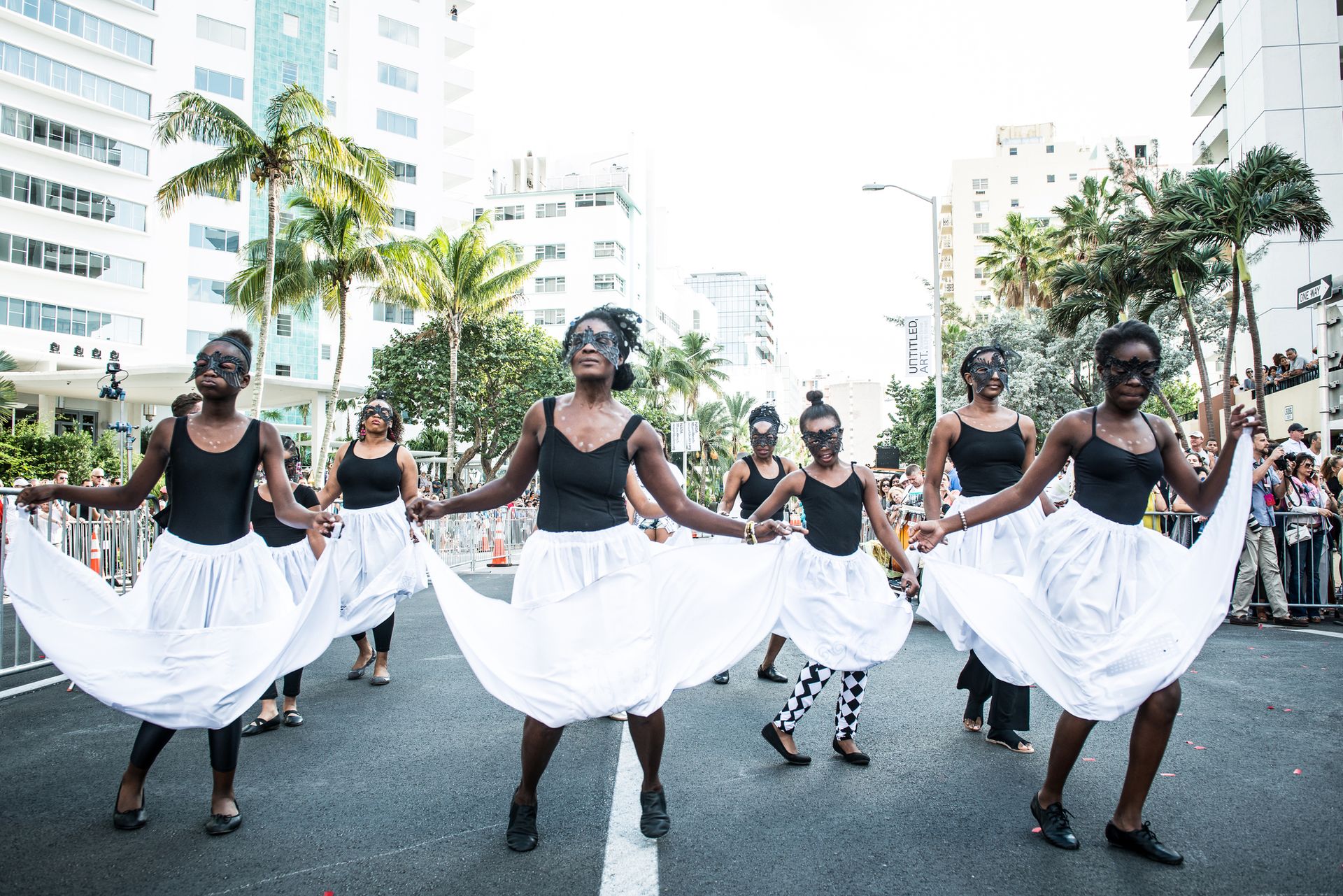
Marinella Senatore
The Italian artist Marinella Senatore staged an updated version of her 2013 work, The School of Narrative Dance, for the parade. She was unfazed by the scale of the production. “I have worked with over 76,000 people so far, in the last ten years, in over 12 countries, and every time the unpredictable part of such performances is the most intriguing aspect. I consider every community-based ritual a great tool for sharing stories, memories, and preserving and reviving cultures,” she says. G.H.

